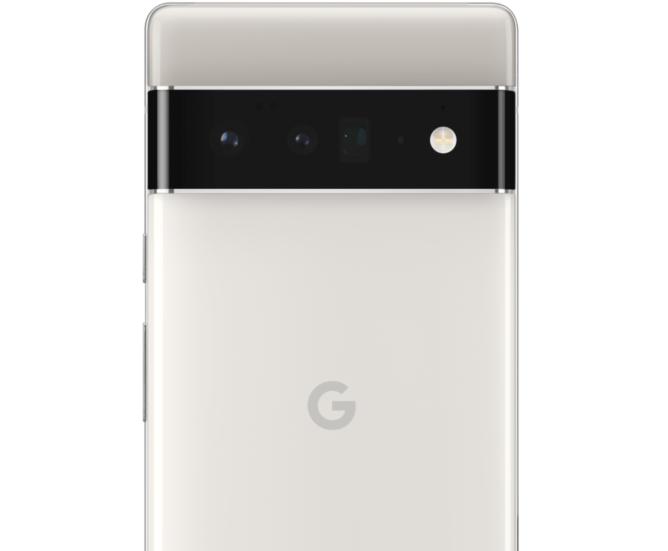Read update
- My trig is rusty. Assuming the measurements are diagonal and 3:2 aspect ratios, the difference in sizing is likely closer to 3x than 3.8x. Still a huge difference in size, but not quite 4x. Our coverage has been updated.
The Android 12 Beta 4 release today had a hidden surprise. Nestled deep inside, changes to the system and Google Camera app include hints at upcoming Pixel 6 hardware. It's far from certain, but it looks like we know which camera sensor Google plans to use for the primary wide-angle on the new phones, and it's a big'un. Details regarding the modem Google may use are also included.
Pixel 6 primary camera is a big boy
It's a single change, but a string spotted by noted Google Camera porter Cstark_27 in a new version of the Google Camera app distributed with Android 12 Beta 4 includes the text "gn_wide_p21" which could (and probably does) point to Google using the ISOCELL GN1 sensor for the wide-angle primary for the 2021 Pixels.
If you aren't familiar with the GN1, that's understandable (usually the Sony sensors that get the hype), but the GN1 is a big boy. Megapixel counts by themselves don't mean a whole lot, but it's a 50MP sensor that's down-right massive for a phone, around 4x as large as the sensor Google's been using for all the Pixels in the primary sensor up until now. The GN1 is 12.21mm across (1/1.31"), while the IMX363 in the Pixel series is 7.06mm (1/2.55"). Technically the size of individual pixels on the GN1 is smaller (1.2 μm vs. 1.40μm), but this is several generations newer, which could make for better per-pixel light-gathering ability even at full resolution. And if Google uses Pixel binning in any capacity, it should utterly destroy the older sensor when matching the IMX 363's 12ish MP at a quad bin.
This could mean even better low-light performance from the already low-light king, and a whole lot more pixels for Google's machine learning processing to take advantage of for everything from simply bigger photos to fine detail processing.
The Pixel 6's camera configuration — the extra space on the left already implied a larger sensor for the primary, and note the square folded/periscope configuration on the right.
For context, this big new sensor would bring it to hardware competition with Apple's Pro Max and Samsung's Ultra phones, which also make use of huge primary sensors. We also already know that the Pixel 6 (at least, the bigger Pixel 6 Pro) would also finally pick up a folded/periscope telephoto 4x "zoom" camera, likely similar to what Samsung and Huawei have done in some of their phones. Google also claims the new camera will be able to "unblur" moving faces and HDR video, among other new tricks.
In short: If the Pixel 6 has a GN1 primary camera (as the teardowns here suggest), when paired with the company's usual magical processing and the other camera changes we already know about, this could be the camera to beat going forward.
Samsung-made chipset, Samsung modem?
We know that Google's new Tensor chipset was made with Samsung's help and will likely use plenty of Exynos guts in its design, but there was still a long-standing question about which modem Google would pair it with. It's really complicated to get into, but essentially it boils down to this: US carriers are pressuring manufacturers to include mmWave 5G in their phones, basically everyone in the US using mmWave 5G has been using Qualcomm-made modems, and chipset analysts I've spoken to on the subject including Moor Insights & Strategy senior analyst Anshel Sag indicated that wasn't likely to change in the near future.
So, knowing how much Google's Tensor had in common with Samsung Exynos chips (which are usually paired with Samsung modems and which don't usually come to the US anymore), there was some concern as to Google's modem strategy, with speculation if it might be possible to mix and match Tensor with a Qualcomm modem for the US market and its mmWave requirements. But again, Cstark_27 has dug up info of a model number "g5123b" that points to a Samsung modem — the company makes an Exynos 5123 mmWave-compatible 5G modem, indicating this could be a variant of that.
While Google could still mix and match things to some degree on a per-market basis, this is a strong indicator that the new Tensor chipset in the Pixel 6 will use an Exynos modem in at least some markets, if not everywhere.
The more we hear about Google's upcoming Pixel 6, the more I like about it. As always, teardowns like this should be taken with a grain of salt. Though it's more true of software changes spotted in development than hardware details like this, just because the code says Google's working on something doesn't mean that it will always pan out. (But I bet both of these hardware details will.)
UPDATE: 2021/08/12 12:48pm PDT BY RYNE HAGER
My trig is rusty. Assuming the measurements are diagonal and 3:2 aspect ratios, the difference in sizing is likely closer to 3x than 3.8x. Still a huge difference in size, but not quite 4x. Our coverage has been updated.


